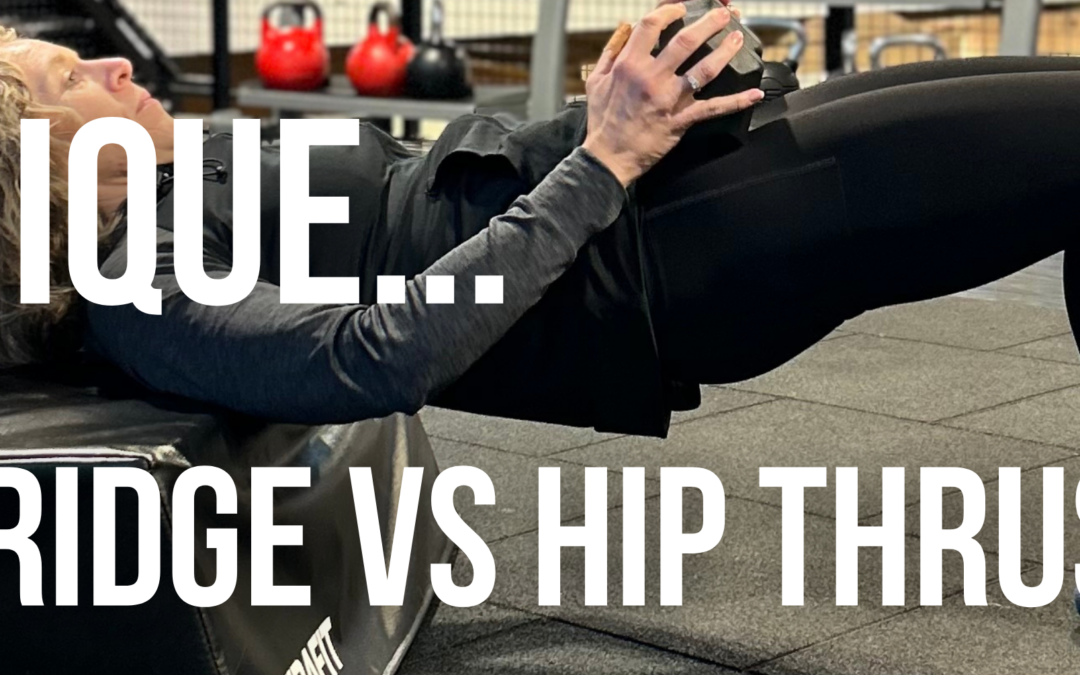These exercises, which target the muscles of the lower body can look very similar so why would you choose one over the other?
The benefits of both of these exercises are to maintain or strengthen the gluteal muscles – the main muscles used for movement and power of the legs in daily activities such as walking, climbing, running and touching the ground. By strengthening these muscles, we can improve posture, aid hip mobility and stability and reduce the load on the lower back therefore minimising back pain.
Glute Bridge
Whilst this exercise doesn’t give as large a range of movement as a hip thrust it’s a really good place to start if you’re new to glute strength training.
The positioning of the body and the movement of a glute bridge are very similar to that of the hip thrust but there are also some distinct differences:
- in setting up for a glute bridge your upper body stays on the mat
- rest your hands lightly by your sides and try not to push through them too much as you lift your lower body
- place your feet hip distance apart, engage your core, drive through your heels and engage your glutes to smoothly drive your hips upwards
- at the top of the movement, your body should form a diagonal line from your knees to your neck
- similarly to the hip thrust, you can add resistance and therefore intensity by performing a single leg version (ensuring the hips stay level by keeping your core engage), adding a looped resistance band around the thighs, or placing kettlebells or dumbbells on your hips (using padding if necessary)
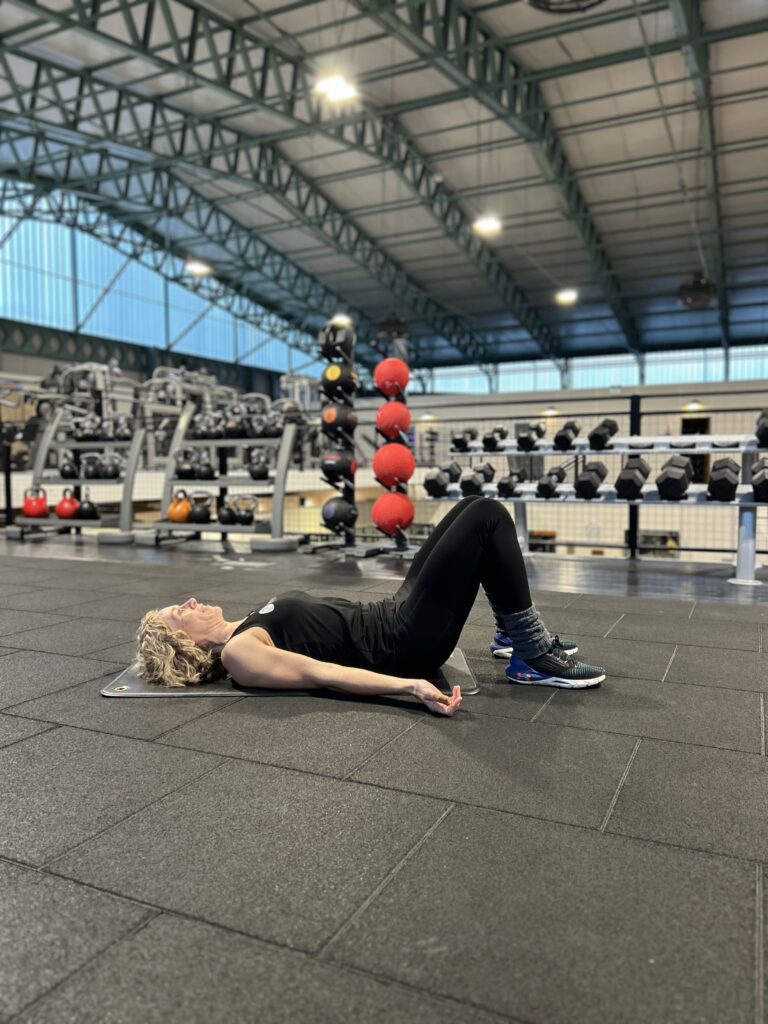
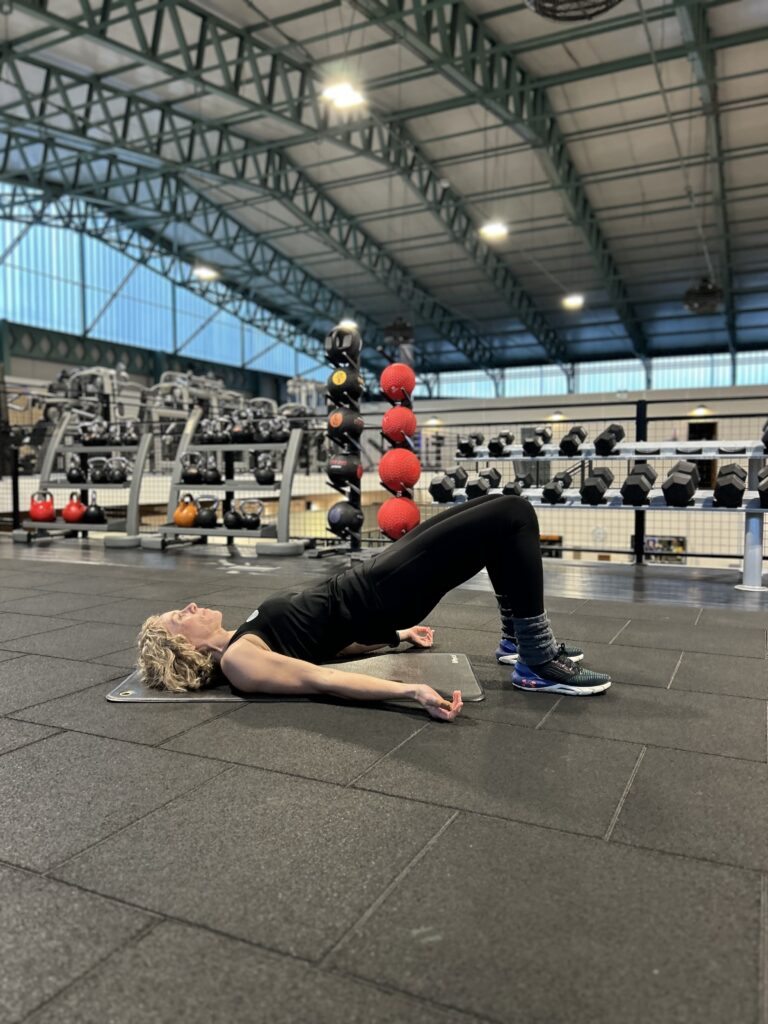
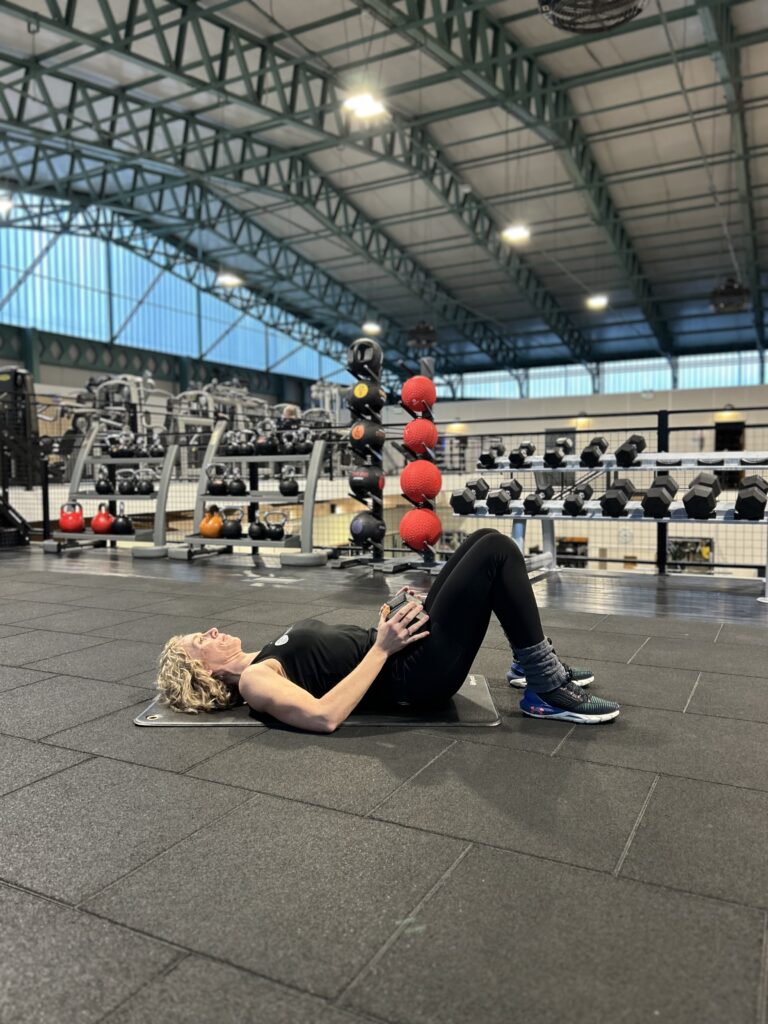
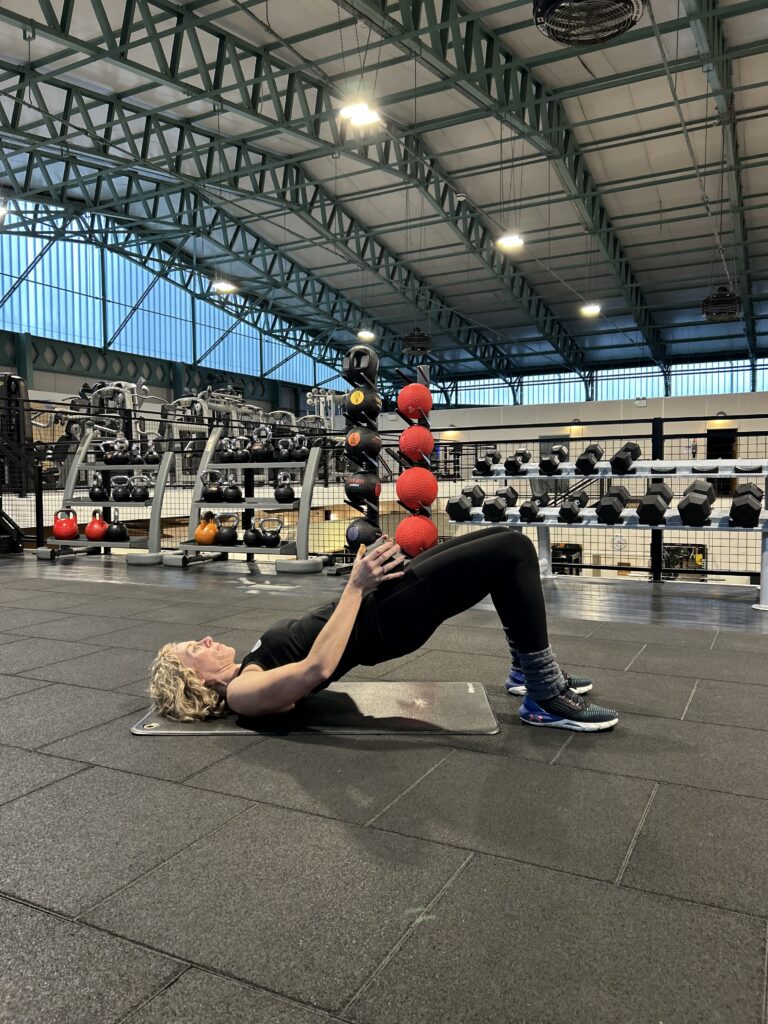
Hip Thrust
The position of this exercise allows for a larger range of motion than a glute bridge which can lead to improved muscle gain and strength in the whole movement pattern.
Set-up:
- Sit with your upper body elevated by resting your mid to upper back/shoulder blades on a bench, soft box or step with a mat on top for comfort. Rest your arms across your chest with hands placed lightly on opposite shoulders.
- Position your feet flat on the floor at hip width apart with your knees bent and your shins vertical. With your core engaged, drive through your heels rather than your toes to activate the posterior chain muscles of the body and smoothly bring your hips from flexion to extension (i.e. lift the hips upwards until they are parallel with the floor and your body is in a straight line). If you are feeling it in your hamstrings and not your glutes, adjust your foot position. To target the glute medius – take the feet slightly wider.
- At the top of the movement, squeeze the glutes whilst keeping your shoulder blades squeezed together and your upper back pushed into the bench – be mindful not to over-extend in your low back by pushing the hips up beyond parallel with the floor.
- Lower your hips back down towards the floor with control to complete the rep.
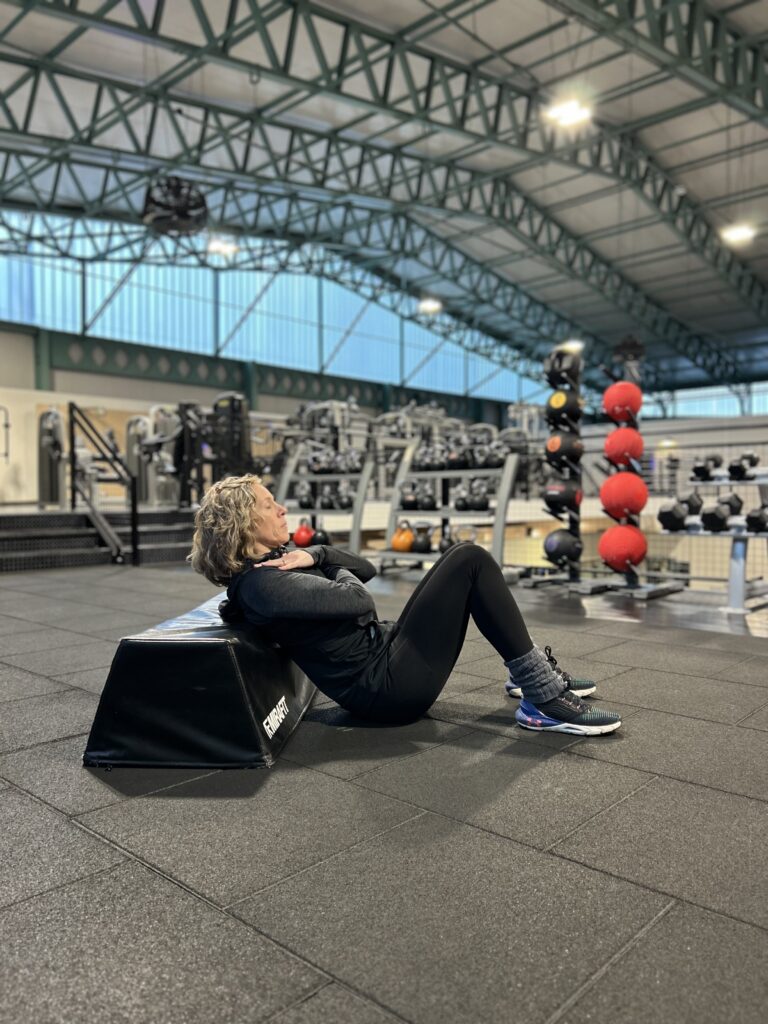
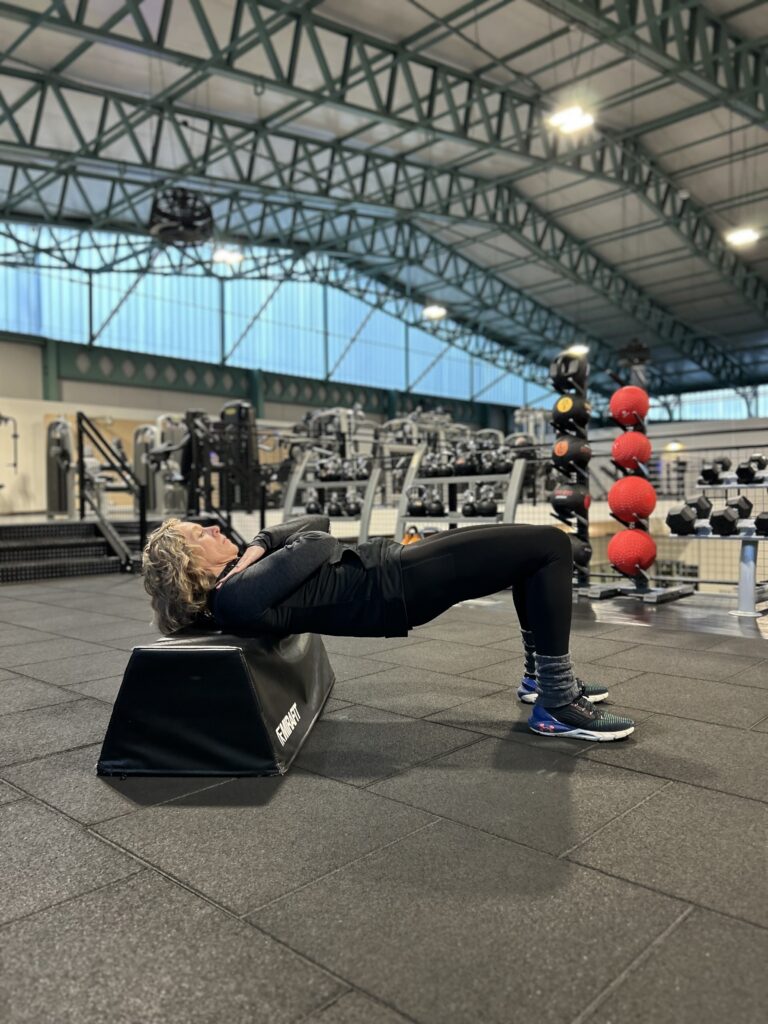
Once you are confident with the bodyweight version above you can add resistance and intensity to this exercise:
- perform a single leg bodyweight version
- use a looped resistance band around the middle of your thighs
- place one or two dumbbells/kettlebells/plates on your hips using padding if needed
- perform a fixed or plate-loaded barbell version – these variations of the exercise can highlight any incorrect movement patterns or imbalances in how our posterior chain muscles are firing – for example, you may notice one end of the barbell hitting the floor before the other
- perform this exercise using the Smiths machine
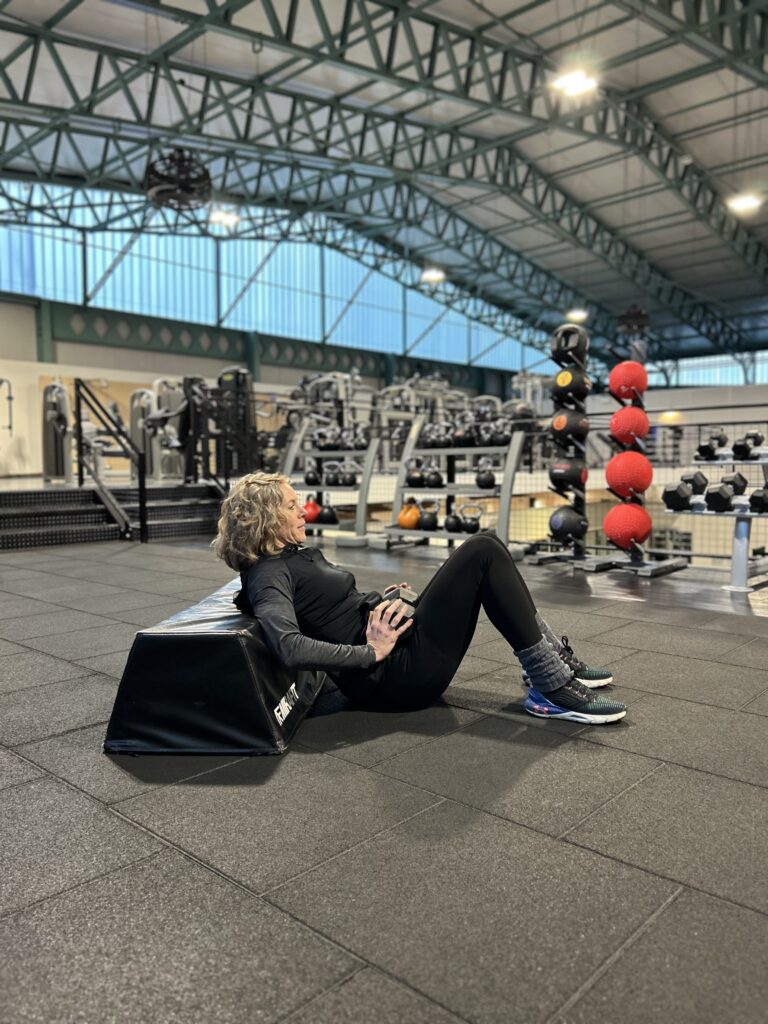
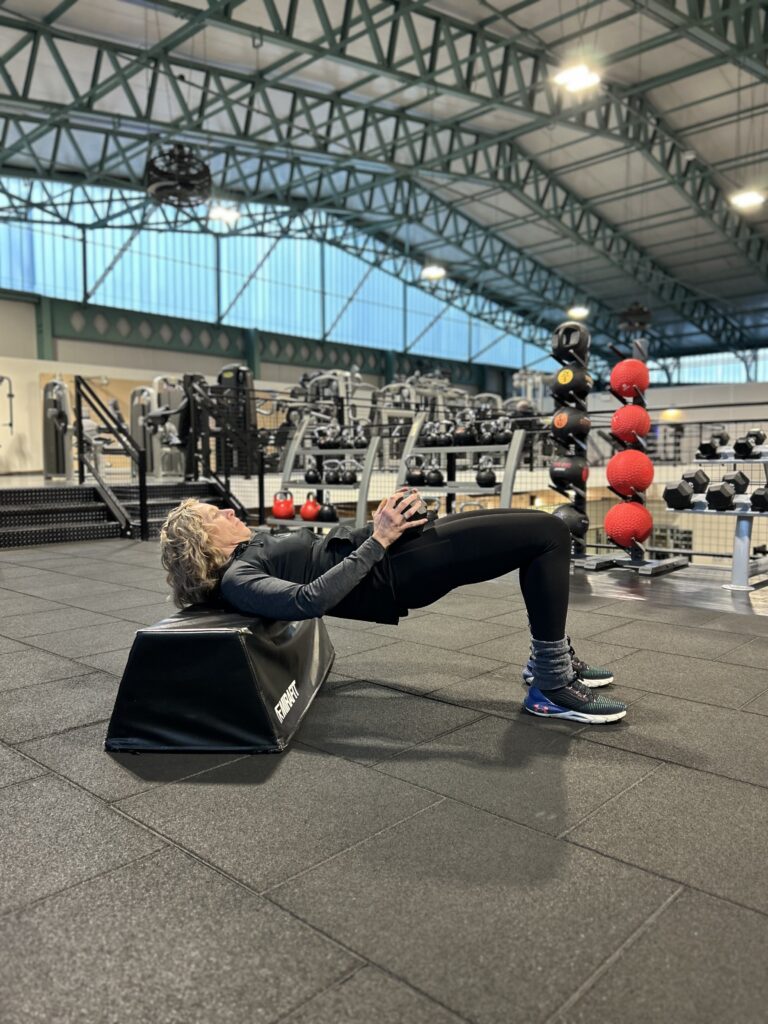
Alternatively, you could try out our new hip thrust machine on the ground floor for a speedier set-up, a more controlled move and consistency with each rep – it’s ideal if you’re new to this exercise or are training heavy.
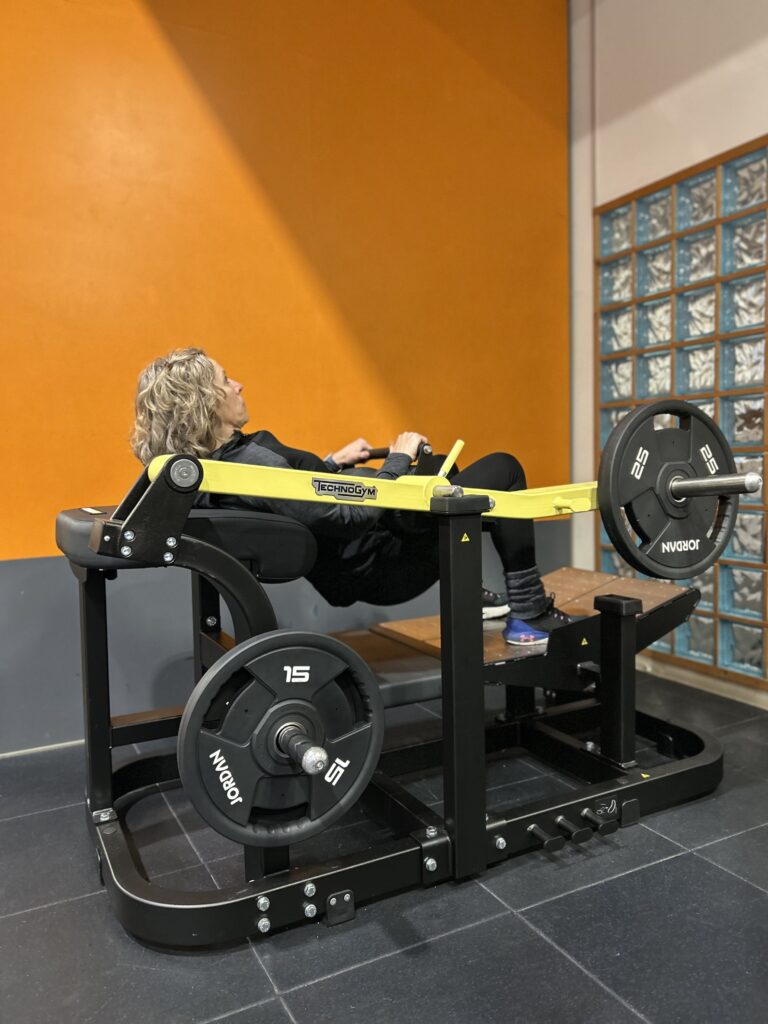
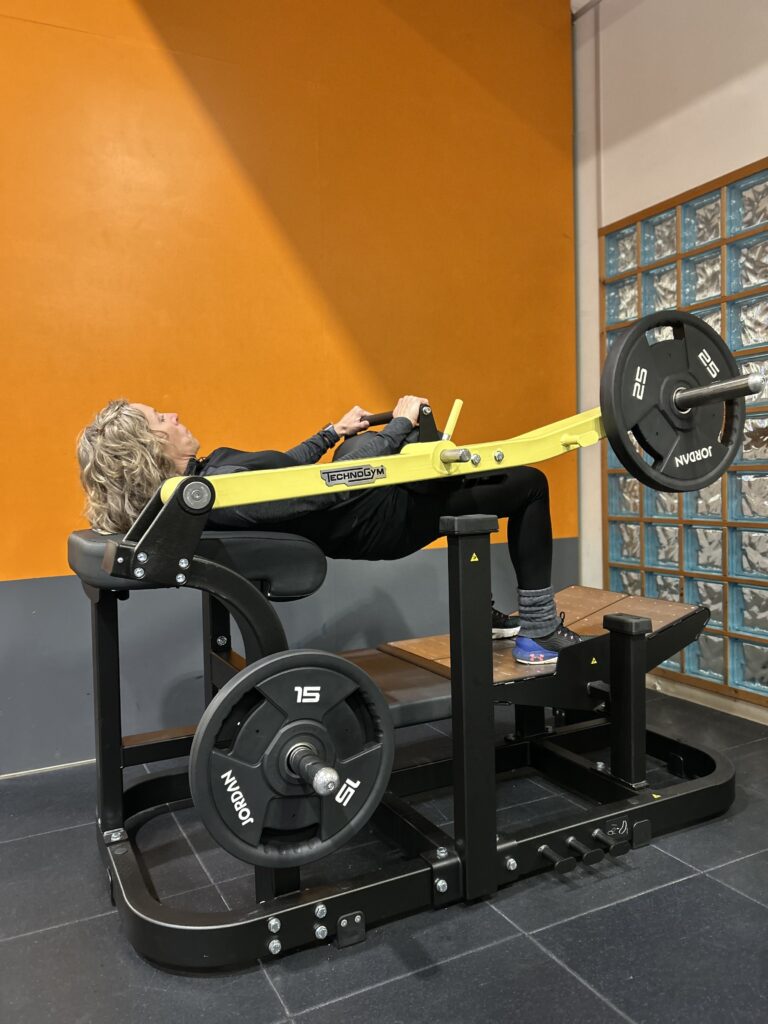
Just ask the team if you’re not sure how to set any of these versions up – we’re here to help.
Blog by Elaine Butler – Nutritional Advisor & Personal Trainer

